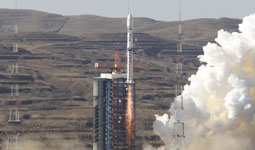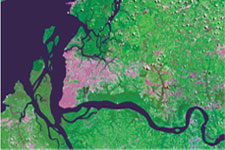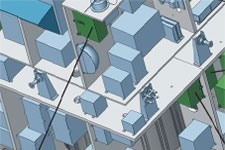
| Brazil and China sign a memorandum turning the CBERS program into a global program.
CBERS-2B life cycle is terminated. |
|
Simulation - CBERS 4 launching |
 |
| Click at images to open photo galleries. |
CBERS-4 Launching Photos December 7, 2014 |
 |
||
 |
CBERS Photo Gallery | |||
| Brazil From Space |  |
|||
 |
Inside CBERS |